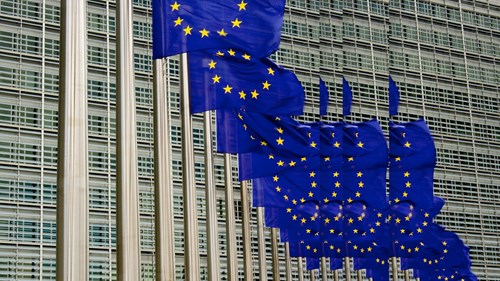Ecodesign for Sustainable Products Regulation now in force
The EU Ecodesign Regulation 2024/1781 (Ecodesign for Sustainable Products Regulation – ESPR; OJ EU 2024 L 2024/1781) came into force on 18 July 2024. The new ESPR replaces the old Ecodesign Directive 2009/125/EC and significantly expands the scope of application for ecodesign requirements – in line with the Commission’s Circular Economy Action Plan of 11 March 2020. While the old Directive only addressed energy-related products, the ESPR now allows ecodesign requirements to be adopted for almost any product traded within the EU. The Regulation defines ecodesign as “the integration of environmental sustainability considerations into the characteristics of a product and the processes taking place throughout the product’s value chain” (Article 2(1)(6) ESPR). This alone makes it clear that the ESPR and the ecodesign requirements adopted within it focus on and affect the entire life cycle of a product from manufacture to disposal.
As is usual in recent EU product regulations, the ESPR is designed as a framework regulation that is fleshed out with delegated acts of the Commission for certain product groups; the Commission also has implementing powers for certain areas (see, for example, Article 11(4) ESPR).
Overall, the ESPR will have a major influence on companies in the EU in the future due to its wide scope of application and the strong impact of the individual delegated regulations on the product groups it addresses.
A. Scope and operation of the Ecodesign Regulation
The new ESPR extends the scope of possible ecodesign requirements to, in principle, all physical goods, including components and intermediate products, that are placed on the market or put into service in the EU. This (only) excludes food and feed, medicinal and veterinary products, living plants, animals and micro-organisms, products of human origin, products of plants and animals directly related to their future reproduction, and certain vehicles in respect of those product aspects for which requirements are set under sector-specific Union legislative acts applicable to those vehicles (Article 1(2) ESPR). The old Directive only enabled ecodesign requirements for energy-related products. On that basis, regulations were made, for example, for refrigerators, televisions or lamps, which will continue to apply for the time being.
The ESPR is a framework regulation. It sets out the principles, conditions and criteria for establishing ecodesign requirements for products. The specific requirements for each product group are defined by delegated acts of the Commission, which will be adopted in the coming years. With this in mind, the Commission will draw up a working plan outlining when ecodesign requirements are to be adopted for the different product groups (Article 18(3) ESPR). Stakeholders will also be consulted as part of the preparation of the working plan and the delegated regulations within the framework of an Ecodesign Forum.
The first working plan is to be adopted by 19 April 2025 and will focus primarily on the product groups listed in Article 18(5) ESPR:
- Iron and steel
- Aluminium
- Textiles, in particular garments and footwear
- Furniture, including mattresses
- Tyres
- Detergents
- Paints
- Lubricants
- Chemicals
- Energy-related products for which ecodesign requirements are to be set for the first time or for which existing measures adopted pursuant to the Ecodesign Directive are to be reviewed under the new Regulation
- Information and communication technology products and other electronics (Article 18(5)). The corresponding Ecodesign Forum is likely to be set up soon, probably before the end of 2024
The delegated acts to be adopted will then specify the ecodesign requirements for the product groups in question (Articles 4 and 8 ESPR). These relate to certain product aspects, such as product durability or recyclability, and there is distinction between performance and information requirements (Article 5 ESPR). The performance requirements are based on certain product parameters, such as the guaranteed service life of the product or the use of easily recyclable materials, and stipulate these (Article 6 ESPR). The information requirements include in particular the new digital product passport (see B. below) and ensure that customers and other stakeholders can easily obtain information about the product, making it easier to comply with the product aspects mentioned (Article 7 ESPR). As is known from the Ecodesign Directive, this will often also include rules on product labels (Article 16 ESPR onwards).
B. New digital product passport
The ESPR introduces a digital product passport, which is primarily an easy way of making the mandatory information on certain products under the ESPR digitally accessible (Article 9 ESPR onwards). This combines the aim of sustainability and digitalisation aspects. The digital product passport is a set of data specific to a product that is accessible via electronic means through a data carrier (Article 2(1)(28) ESPR). The importance of the digital product passport should not be underestimated: products can only be placed on the market or put into service if a digital product passport is available (Article 9(1) ESPR).
The specific data to be stored in the digital product passport and the date a product passport becomes mandatory are also defined on a product-specific basis in the Commission’s legal acts. This data may be general information, such as the product identifier or information on the installation, use, maintenance and repair of the product, but also, for example (particularly when using substances of concern), information on the raw materials used in the manufacture or supply chain of the product. The data carrier the data is stored on or the layout and position of data display will also be defined in detail by the delegated acts still to be enacted by the Commission. However, the Regulation makes it clear that digitalised information about the product and, if applicable, the digital product passport, should be easily accessible by scanning a data carrier such as a QR code and should preferably be located on the product itself.
The data will also be stored in a new digital product passport registry which the Commission will set up by July 2026. A web portal created and maintained by the Commission will let stakeholders search for and compare the data in digital product passports. The digital product passport will also play a role in customs procedures in the future.
C. Ban on the destruction of unsold consumer products
For the first time, the ESPR contains provisions that prohibit the destruction of unsold consumer products (Article 23 ESPR onwards). The Regulation sets out a two-stage system which is also differentiated by company size. Based directly on the Ecodesign Regulation, the first stage requires disclosure of information by economic operators that dispose of consumer products directly or have them disposed of on their behalf. They must disclose information about this practice. Medium-sized companies are not affected by this obligation until 2030 and small and micro enterprises are not affected at all.
From July 2026, stage two means that large companies will be prohibited from destroying specific unsold consumer products. The list of consumer products concerned can be supplemented by the Commission through delegated acts and currently includes apparel, apparel accessories and shoes. This ban on destruction will also apply to medium-sized companies from July 2030. Small and micro enterprises will not be affected.
D. Economic operators addressed
As is known from recent EU product law, the ESPR imposes obligations not only on manufacturers, importers, distributors and retailers, but also on fulfilment service providers, providers of online marketplaces and online search engines (Article 27 ESPR onwards).
E. Conclusion
The ESPR significantly expands the scope and reach of environmental requirements for products and will present companies with considerable challenges. This is also true given the large number of delegated and implementing acts to be enacted by the Commission over the next few years, which will flesh out the ESPR in many ways.
In light of this, companies would be well advised to closely follow both the drafting of the Commission’s working plans and the specification of product-related requirements through the Commission’s legal acts. This will enable companies to influence the legal acts in good time and ensure compliance with them – especially as the proper implementation of the ESPR will be ensured by penalties established by the Member States (Article 74 ESPR).
Well
informed
Subscribe to our newsletter now to stay up to date on the latest developments.
Subscribe now








